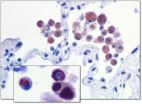(Press-News.org) PROVIDENCE, R.I. [Brown University] — The difference between merely throwing around buzzwords like "personalized medicine" and "big data" and delivering on their medical promise is in the details of developing methods for analyzing and interpreting genomic data. In a pair of new papers, Brown University epidemiologist Yen-Tsung Huang and colleagues show how integrating different kinds of genomic data could improve studies of the association between genes and disease.
The kinds of data Huang integrates are single-nucleotide differences in DNA, called SNPs, data on gene expression, which is how the body puts genes into action, and methylation, a chemical alteration related to expression. All are potentially relevant to whether a person gets sick, but most analyses that connect genomics to disease account for only one. In papers now online in the journals Biostatistics and Annals of Applied Statistics, Huang describes the results of testing the model in analyses of asthma and brain cancer data.
"Our integrated approach outperforms single-platform approaches," Huang said. "Applied to real data sets, it works."
Improved performance
The statistical model Huang developed with Tyler VanderWeele and Xihong Lin of Harvard, co-authors on the Annals paper, isn't purely statistical. Its structure and assumptions are informed by the underlying biology. SNPs can be directly associated with disease, or that association can be mediated by whether genes, including the ones in which the SNPs reside, are expressed in healthy or sick patients.
The Annals paper describes the model witih SNPs and expression in detail and its application to data connecting the gene ORMDL3 to asthma. Using the model, the authors found 15 SNPs in the gene with significant associations with disease, compared to only five that have been apparent analyzing SNPs alone. The researchers also found that their "p-values," (a measure of an association's statistical significance) were substantially lower, and therefore stronger, when using the combined analyses their model allows, compared to traditional methods that track just one variable or attempt to mix multiple data sets.
They know the model isn't likely just churning up a lot of false positive SNPs because they also tested it against "null" data where it shouldn't find anything, and indeed it didn't.
Valid with different subjects
Huang further the extends the model, and again reports similar results in Biostatistics – new potentially relevant genes and lower p values – in the asthma data set as well as one involving the gene GRB10 and glioblastoma multiforme brain tumors. But this paper makes additional contributions. One of them is showing that the model can be useful even when SNP data and gene expression data come from different people, as long as the subjects are generally comparable. Another is that it integrates not only SNPs and expression, but also DNA methylation data, which is a chemical alteration of DNA associated with expression.
This is important because gene expression and DNA methylation can be tissue dependent. In the case of brain cancer, it's rarely plausible for an epidemiologist to retrieve brain tissue from the same subjects from whom they can more readily sample DNA.
In a new study Huang will conduct with Brown epidemiology colleague Dominique Michaud, he plans to apply the model to new sets of brain cancer data, including DNA from subjects with and without tumors as well as expression data from tissue of people who died, both of brain cancer or other causes.
There could be many other applications as well. The model's general structure of relationships between two variables (one which may mediate the other) and an outcome, he adds, allows it to be applied to similarly structured phenomena, not just to genomics and disease.
"I think our approach is representative of a new framework of data integration," Huang said. "As long as you can lay out your biological question in terms of this kind of mediation model, then our approach can help you easily analyze your data."
INFORMATION:
Brown University, the National Cancer Institute (grants: R37-CA076404, P01-CA134294) and the National Institute of Environmental Health (grant: P42-ES016454) funded the research.
New epidemiology model combines multiple genomic data
2014-04-08
ELSE PRESS RELEASES FROM THIS DATE:
Western University study unlocking secrets of breast tissue
2014-04-08
A unique population of microbes in the female breast may lay the groundwork for understanding how this bacterial community contributes to health and disease, according to a new study out of Western University (London, Canada). The study titled "Microbiota of human breast tissue," is now published online, in advance of the May issue of Applied and Environmental Microbiology.
The human body is home to a large and diverse population of bacteria with properties that are both harmful and beneficial to our health. Studies are revealing the presence of bacteria in unexpected ...
Expanding particles to engineer defects
2014-04-08
Materials scientists have long known that introducing defects into three-dimensional materials can improve their mechanical and electronic properties. Now a new Northwestern study finds how defects affect two-dimensional crystalline structures, and the results hold information for designing new materials.
In packed, two-dimensional crystalline systems, such as in photonic two-dimensional crystals, the particles are organized in hexagonal lattices. One particle is in the center of the hexagon with six neighboring particles around it. A defective lattice is when the center ...
More insights from tissue samples
2014-04-08
This news release is available in German.
They discovered that the so-called HOPE method allows tissue samples to be treated such that they do not only meet the requirements of clinical histology, but can still be characterised later on by modern methods of proteomics, a technique analysing all proteins at once. This is successful, since the structure of the tissue is "fixed" in a way that the protein molecules remain accessible for systematic analysis. This technique therefore meets current requirements in terms of a more personalised medicine and thus opens up ...
Few Americans know where elected officials and candidates stand on government support for research
2014-04-08
ALEXANDRIA, Va.—April 8, 2014—Two-thirds of Americans (66%) say it's important for candidates running for office to assign a high priority to funding medical research, according to America Speaks, Volume 14, a compilation of key questions from public opinion polls commissioned by Research!America. Polling shows that Americans place a high value on U.S. leadership in medical innovation, yet only 12% say they are very well informed about the positions of their senators and representative when it comes to their support of medical and scientific research. http://www.researchamerica.org/poll_summary. ...
Thinking about a majority-minority shift leads to more conservative views
2014-04-08
Facing the prospect of racial minority groups becoming the overall majority in the United States leads White Americans to lean more toward the conservative end of the political spectrum, according to research published in Psychological Science, a journal of the Association for Psychological Science.
The findings suggest that increased diversity in the United States could actually lead to a wider partisan divide, with more White Americans expressing support for conservative policies.
Psychological scientists Maureen Craig and Jennifer Richeson of Northwestern University ...
Logo color affects consumer emotion toward brands, MU study finds
2014-04-08
COLUMBIA, Mo. – Many studies have shown that a company's logo is one of the most important aspects of marketing and advertising a brand, or features that distinctly identifies a company's product or service from its competitors. Now, a researcher at the University of Missouri has found that the specific colors used in a company's logo have a significant impact on how that logo, and the brand as a whole, is viewed by consumers.
Jessica Ridgway, a doctoral student in the MU Department of Textile and Apparel Management, surveyed 184 adults using generic logos of different ...
Synthetic gene circuits pump up cell signals
2014-04-08
Synthetic genetic circuitry created by researchers at Rice University is helping them see, for the first time, how to regulate cell mechanisms that degrade the misfolded proteins implicated in Parkinson's, Huntington's and other diseases.
The Rice lab of chemical and biomolecular engineer Laura Segatori has designed a sophisticated circuit that signals increases in the degradation of proteins by the cell's ubiquitin proteasome system (UPS).
The research appears online today in Nature Communications.
The UPS is essential to a variety of fundamental cellular processes, ...
Unexpected results in cancer drug trial
2014-04-08
Research from the University of Southampton has shown a drug, used in combination with chemotherapy to treat advanced colorectal cancer, is not effective in some settings, and indeed may result in more rapid cancer progression.
The New EPOC study, published in The Lancet Oncology and funded by Cancer Research UK, evaluated whether the drug cetuximab and chemotherapy together worked better than chemotherapy alone as a treatment in addition to surgery for people with bowel cancer that had spread to the liver but could be surgically removed. In the trial patients either ...
Scalable CVD process for making 2-D molybdenum diselenide
2014-04-08
Nanoengineering researchers at Rice University and Nanyang Technological University in Singapore have unveiled a potentially scalable method for making one-atom-thick layers of molybdenum diselenide -- a highly sought semiconductor that is similar to graphene but has better properties for making certain electronic devices like switchable transistors and light-emitting diodes.
The method for making two-dimensional molybdenum diselenide uses a technique known as chemical vapor deposition (CVD) and is described online in a new paper in the American Chemical Society journal ...
Study: Black carbon is ancient by the time it reaches seafloor
2014-04-08
A fraction of the carbon that finds its way into Earth's oceans -- the black soot and charcoal residue of fires -- stays there for thousands for years, and a new first-of-its-kind analysis shows how some black carbon breaks away and hitches a ride to the ocean floor on passing particles.
The study by scientists from Rice University, the University of California, Irvine, and the University of South Carolina offers the first detailed analysis of how black carbon gets into deep ocean sediments, as well as an accounting of the types and amounts of black carbon found in those ...


